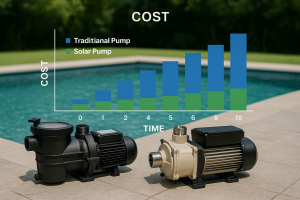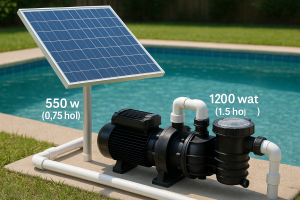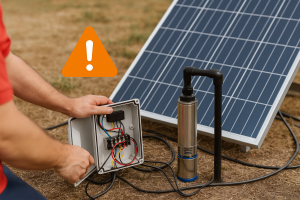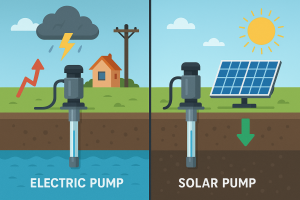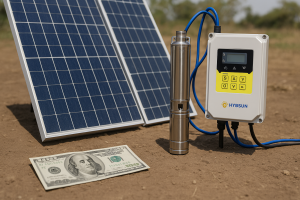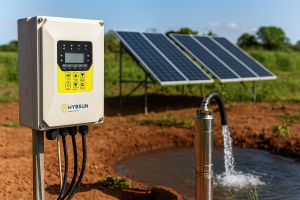Is your pump acting up? Worried about sudden breakdowns? Proper care keeps your solar water pump working well, saving you stress and money down the line.
The best way to maintain your solar water pump is through regular inspections and cleaning. This includes checking solar panels, wiring, the pump itself for debris, and ensuring filters are clear. This routine care maximizes efficiency and extends the pump's life, giving you reliable water access.
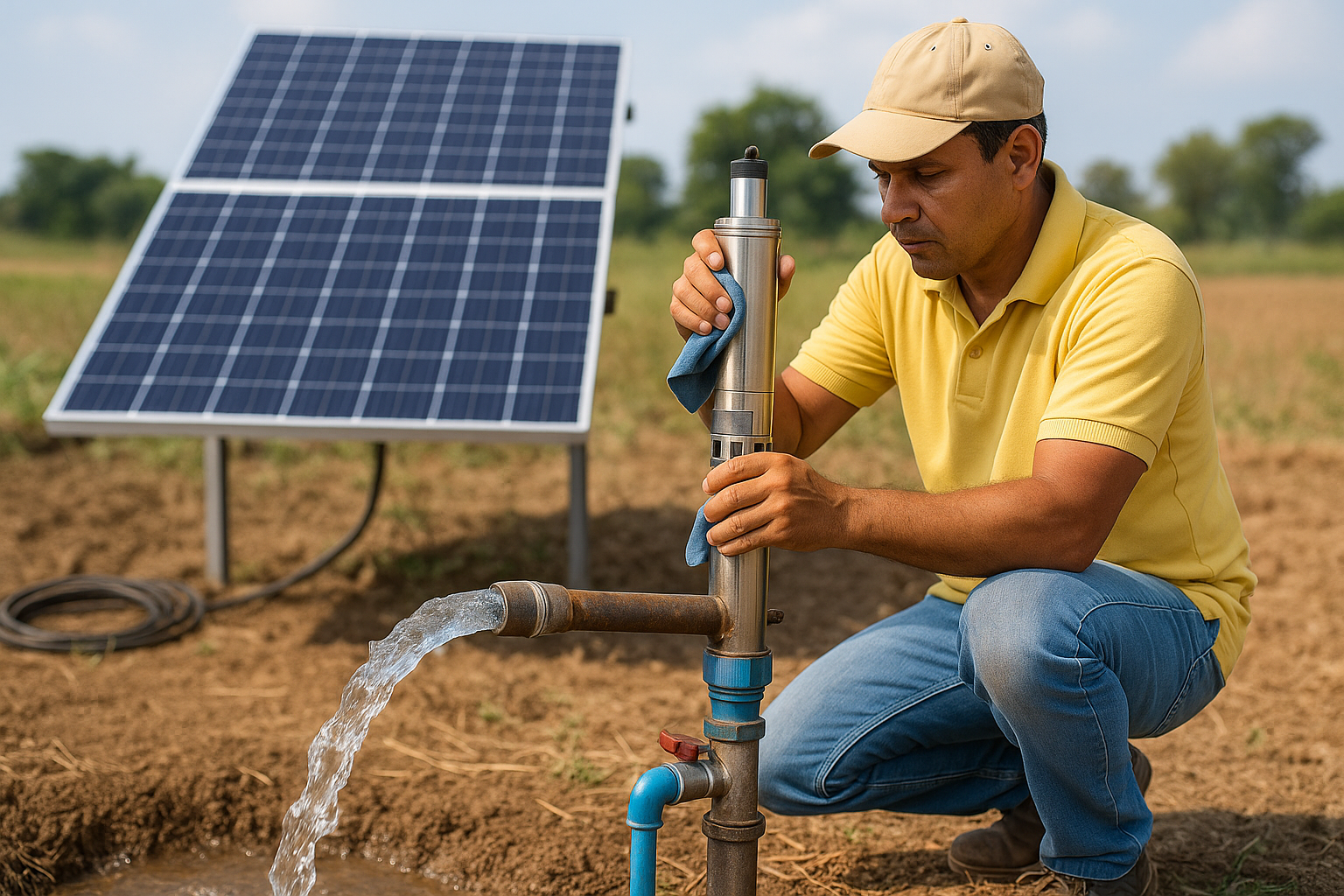
"Solar Water Pump Maintenance Guide")
Keeping your solar water pump in good condition isn't too complicated, but it does need regular attention. I've learned a lot about these systems over the years, both from my time in the factory and helping clients set up their own. Let me show you what you need to do. It's important to follow these steps to get the most from your investment.
What specific maintenance does a solar water pump system truly require?
System not working like it used to? Not sure what to look at? Knowing the main things to check helps avoid big repair bills and keeps your water flowing.
A solar water pump system needs you to clean the solar panels often. You also need to check the wires and connections. The pump unit itself needs to be checked for any blockages. And you should watch the water flow and pressure to make sure everything is working right.
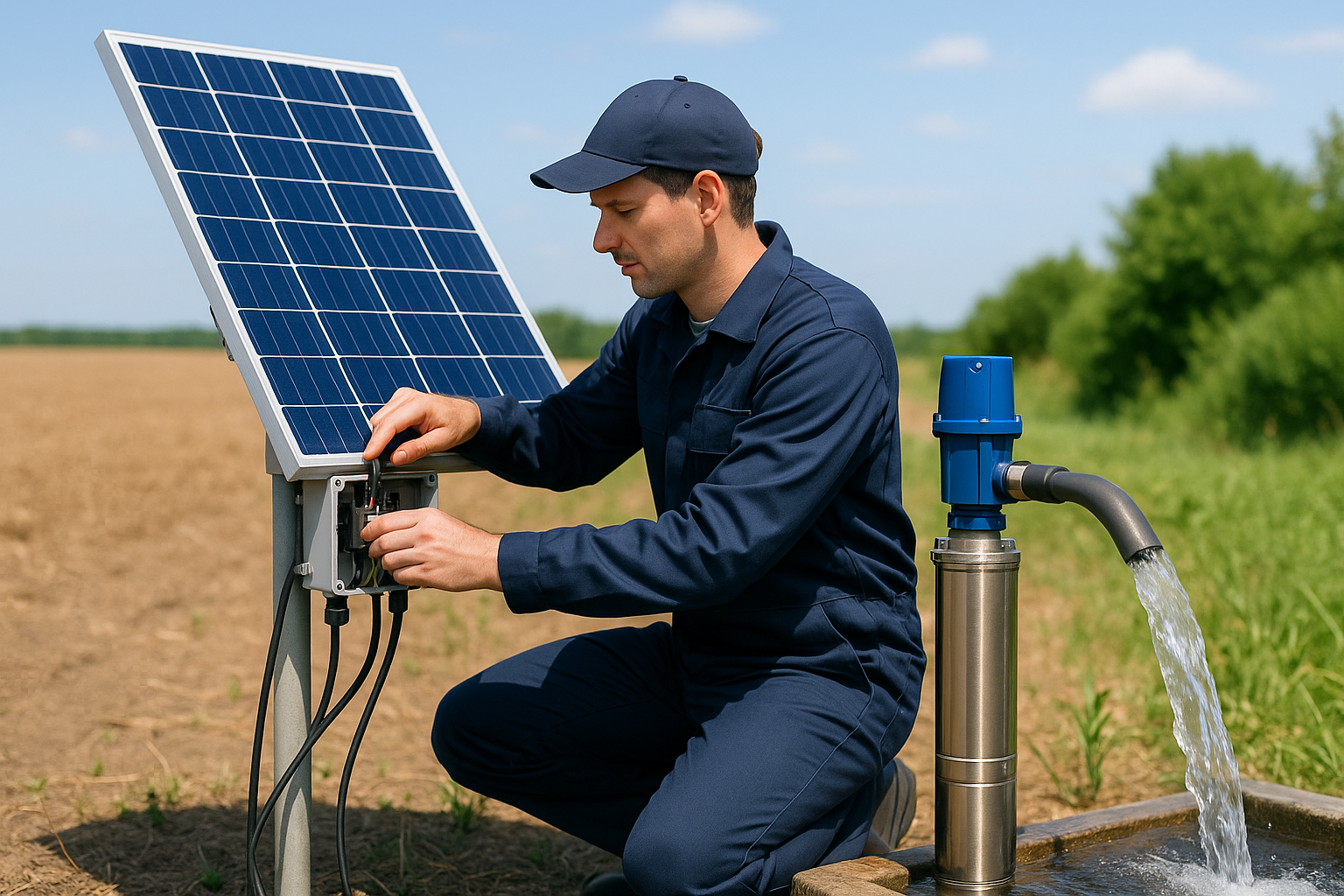
"Solar Panel Cleaning for Pumps")
To keep your solar water pump system running smoothly, you need to look after several key parts. It's not just the pump; the whole system works together. I remember a client who had issues, and it turned out their panels were just incredibly dusty, cutting power significantly. Once we cleaned them, the pump worked perfectly.
Solar Panel Care
Your solar panels are the power source. If they can't get enough sun, your pump won't work well.
- Regular Cleaning: Dust, leaves, bird droppings, and other debris can cover the panels. You need to clean them regularly. Use water and a soft brush or cloth. I usually suggest doing this every few months, or more often if you live in a dusty area or near trees.
- Inspection: Check for any cracks, chips, or damage to the panel surface. Also, make sure the mounting frame is secure.
Wiring and Connections
Loose or damaged wires can cause big problems. They can reduce power or even stop the pump.
- Visual Checks: Look at all the wiring between the panels, controller, and pump. Make sure connections are tight and not corroded. I’ve seen connections loosen over time due to vibrations or weather.
- Protection: Ensure wires are protected from animals or physical damage. Conduit can be a good idea.
Pump Unit and Wellhead
The pump itself and where the water comes from also need attention.
- Debris Check: For submersible pumps, ensure the wellhead is sealed to prevent debris from falling in. For surface pumps, make sure the intake area is clear.
- Water Level (if applicable): If you're pumping from a well or tank, be aware of the water level. Running a pump dry can damage it very quickly. I always advise clients to install dry-run protection if their system doesn't have it.
So, how exactly do you maintain a solar water pump?
Ready to get your hands a bit dirty? Not sure exactly what to do first? I'll guide you through the practical steps for good solar pump maintenance.
To maintain a solar water pump, you should regularly clean its filters. Also, check the impeller and flow valve for any blockages. Make sure all parts are free from dirt and debris. Then, put it back together and test it.

"Maintaining a Solar Water Pump")
Maintaining the pump unit itself is very important for its long life and good performance. I've seen many pumps fail early simply because basic cleaning was overlooked. Here’s a general guide that I often share, based on common pump designs. Always check your pump’s manual too, as steps can vary.
Here are the steps I recommend:
| Step | Action | Why it's important | My Tip |
|---|---|---|---|
| 1. Safety First | Disconnect the pump from its power source (the solar controller). | Prevents electrical shock or accidental startup. | I always double-check the power is off before I touch anything. |
| 2. Remove & Clean Filter | Remove the filter cover and the foam mesh filter membrane. Clean both. | A clogged filter reduces water flow and strains the pump. | Rinse them under clean water. A soft brush can help. |
| 3. Check Variable Flow Valve | Inspect and clean the variable flow valve, if your pump has one. | Debris can jam the valve, affecting flow control. | Make sure it moves freely after cleaning. |
| 4. Inspect Impeller Access | Check the impeller area for any blockages without full disassembly first. | Small debris can often be removed easily here. | Sometimes, just clearing the inlet is enough. |
| 5. Disassemble & Clean Pump Body/Impeller | Carefully disassemble the pump body and impeller assembly. Clean all parts. | Removes stubborn debris from critical moving parts. | Note the order of parts as you take them apart. This saved me headaches early on! |
| 6. Reassemble & Test | Reassemble all parts correctly. Reconnect power and test the pump. | Ensures everything is working as it should. | Listen for any strange noises after reassembly. |
This kind of detailed cleaning might be needed every few months to a year, depending on your water quality. If the water is very gritty, you might need to do it more often.
What are the essential maintenance steps needed for these pumps?
Feeling a bit swamped by all the details? Need a simple checklist to follow? These basic steps make pump care easier, keeping your system working well for longer.
The key steps for pump maintenance are cleaning filters, checking the impeller for clogs, looking at seals and bearings for wear, making sure electrical connections are safe and tight, and regularly checking how the whole system is working.

"Essential Pump Maintenance Steps")
Beyond the specific cleaning I just described, there are ongoing checks that form the backbone of good pump maintenance. Think of it like a car – you have regular oil changes, but you also check tire pressure more often. I always tell my clients that a little regular attention goes a long way.
Routine Operational Checks
These are things you can do frequently, even daily or weekly, without taking anything apart.
- Listen to the Pump: Does it sound normal? Any new grinding, whining, or rattling sounds can indicate a problem. I once diagnosed a failing bearing just by the sound it was making.
- Check Water Flow: Is the output strong and consistent? A sudden drop in flow or pressure can mean a clog, a leak, or a problem with the power supply.
- Inspect for Leaks: Look around the pump and any fittings for water leaks. Even a small drip can lead to bigger issues or waste water.
Scheduled Deeper Inspections
These might be done monthly or quarterly.
- Clean Intake Screens/Filters: As mentioned before, this is critical.
- Check Seals and Gaskets: Look for any signs of wear or damage. Seals prevent water from getting into the motor or other sensitive parts. Replacing a worn seal is much cheaper than replacing a motor.
- Verify Electrical Connections: Ensure all connections at the pump, controller, and panels are still tight and corrosion-free. Vibration can loosen connections over time. Always turn off the power before checking these.
- Impeller Check (if easily accessible): Some pumps allow for quick inspection of the impeller. Make sure it spins freely and isn't clogged with stringy material or debris.
It’s about creating a simple routine. Maybe every first Saturday of the month, you do a quick visual check and listen. Then, every three or six months, you do the more detailed filter and impeller cleaning.
What is the life expectancy of a solar water pump?
Thinking about getting a solar pump? Or wondering how long your current one will last? Knowing the typical lifespan helps you plan for the future and get the best value.
A solar water pump that is well looked after can last for 10 to 20 years. The solar panels themselves often last even longer, maybe 20 to 25 years. How well you maintain the pump really affects how long it will work.

"Lifespan of Solar Water Pump")
The lifespan of a solar water pump isn't a single, fixed number. It depends on several things. But with good care, they are very durable. I've seen systems I helped install over a decade ago still going strong.
Factors Influencing Lifespan
- Pump Quality: Higher quality pumps, often with stainless steel components or more robust motors, generally last longer than cheaper, plastic-bodied ones. It’s an investment upfront that can pay off.
- Water Quality: Pumping sandy, gritty, or corrosive water will wear out pump components like impellers and seals much faster. If your water isn't clean, good pre-filtering is essential.
- Operating Conditions: How often does the pump run? Is it sized correctly for the job? An overworked pump or one that frequently runs dry will have a shorter life.
- Maintenance: This is a big one. Regular cleaning and inspection, as we've discussed, can significantly extend a pump's life. Neglect is a pump's worst enemy. I’ve seen pumps fail in just a few years due to lack of simple cleaning.
- Environment: Extreme temperatures or harsh weather can also play a role, especially for any exposed components like the controller or surface pumps.
Typical Component Lifespans
- Pump Motor/Wet End: This is usually the part with the 10-20 year estimate if well-maintained. The motor itself might last longer than wear parts like seals or impellers, which can often be replaced.
- Solar Panels: These are very reliable, often with warranties of 20-25 years, and can continue producing power even longer, though their efficiency might slowly decrease over time.
- Controller: The electronic controller can last 5-15 years, sometimes more. It's often protected in an enclosure.
By taking good care of your system, replacing wear parts when needed, and ensuring it's not working in overly harsh conditions, you can really maximize its operational life.
Conclusion
In short, regular checks and cleaning are vital. This care ensures your solar water pump works efficiently for many years, giving you reliable water and peace of mind.
